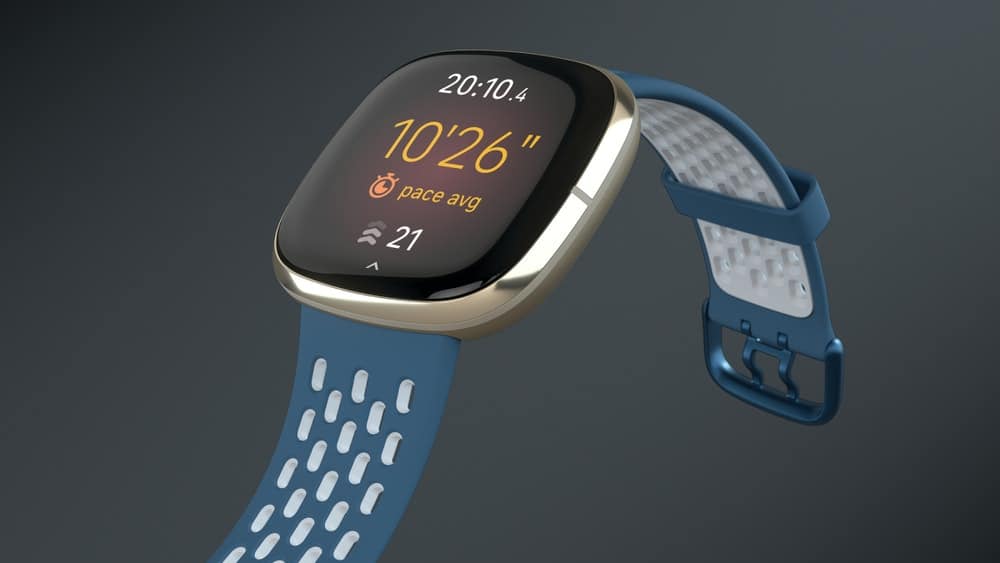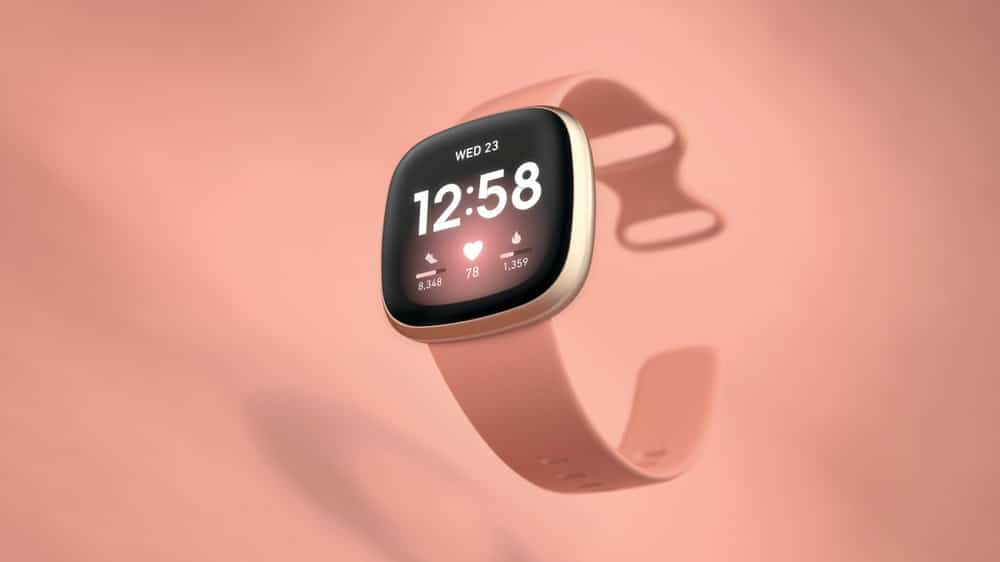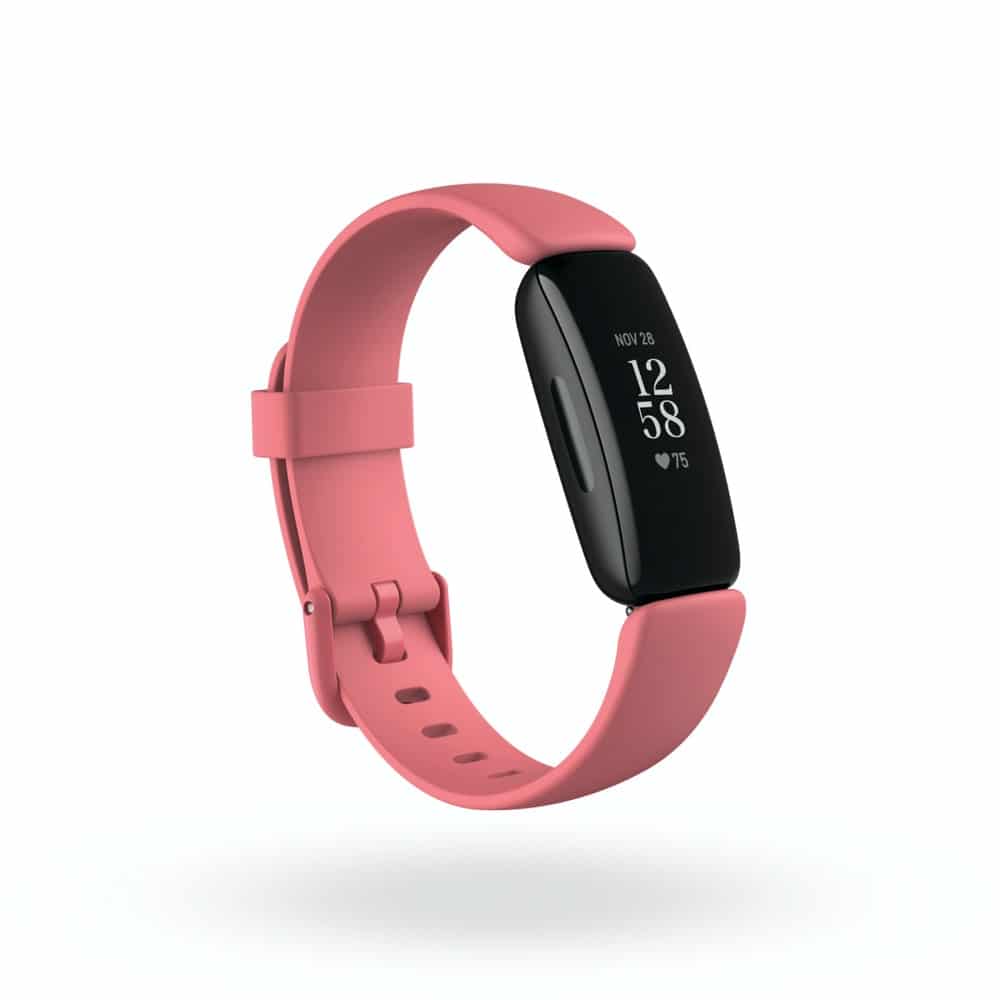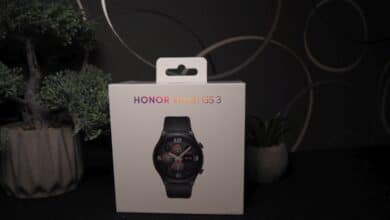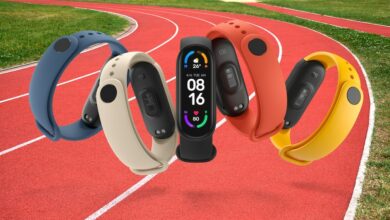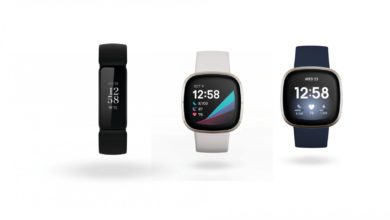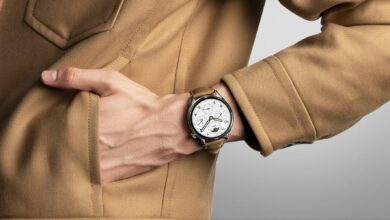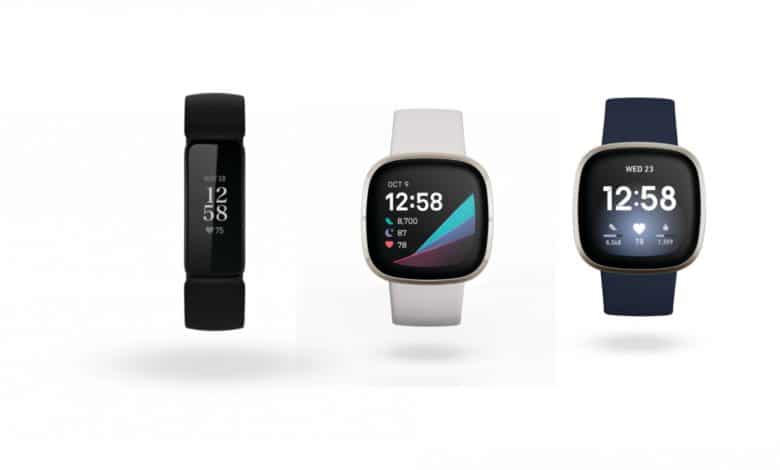
With the Sense, Versa 3 and Inspire 2, Fitbit aims to conquer the smart watch market with a focus on health. But the manufacturer has not only introduced new hardware. With Fitbit-Premium, the health and fitness experts have a special service on offer.
Virtual Launch Event
In corona times, manufacturers increasingly make use of the possibility of streaming events. Fitbit is no exception. The manufacturer presented its three upcoming wearables in a virtual launch event. These include two Smartwatches and a tracker. But not only new accessories were presented. Fitbit also presented a new service in detail. Fitbit Premium is a service that analyzes the data from the Smartwatch in detail.
Ionic will no longer be available in the future
Up to now, Fitbit has focused primarily on its flagship Ionic. But the manufacturer is now apparently giving up the brand completely. The previous top product is to be replaced by the Sense. The scythe is based on the design of the popular Versa series. This will also be updated. So the third generation of the Versa is soon to come on the market. The third announcement, the Inspire 2, is “only” a tracker. Fitbit is showing gratifying understatement in the design of the three new wearables. But appearances can be deceptive here. After all, some exciting features are slumbering inside the new bracelets. Assuming one takes out a subscription to the new service “Fitbit Premium”. This service gets the most out of the bracelets.
The Fitbit Sense
With the Sense, Fitbit is clearly launching its new flagship product. The manufacturer emphasizes that it will not be launching a simple Smartwatch on the market. Fitbit would rather like to conquer a completely new segment with the Sense. The Sense, as a so-called “Health-Watch”, should be able to please a large number of buyers. The basis of the Sense is the collection of many important health data of the wearer. Although other Smartwatches already offer comprehensive data collection, not to the extent that the Sense should be able to do so. The features include standard heart rate measurement and tracking of sleep times. Furthermore, the Sense offers a powerful SpO2 sensor. This can determine the oxygen in the blood. What could previously only be displayed as a simple curve is now to be shown in a meaningful percentage value.
But we already knew these functions from the predecessor models. Fitbit wants to convince the Sense with a number of new and exciting functions. For example, the individual tools are to be upgraded. The pulse sensor in particular now has several diodes on board. This ensures that the wearer’s oxygen saturation and breathing rate can now also be determined. In addition, the Sense displays the SpO2 percentage as an understandable percentage value. It is now also possible to measure the temperature of the skin surface. Furthermore, the Sense offers an EDA sensor. This can read the stress level of the wearer. In doing so, it makes use of the conductivity of the skin. If it turns out that the stress level is too high, the Sense can also be used to take direct action. Similar to the Apple Watch, a Fitbit’s new flagship then encourages the wearer to do calm breathing exercises. It gets exciting in the area of the ECG. So you will be able to use the Sense as such. If this works, it may be possible to detect impending atrial fibrillation in advance. Fitbit is now in no way inferior to the competition from Apple and Samsung. However, it will probably take a while before we Europeans can benefit from this technology. After all, the approval of medical devices in our fields is (fortunately) associated with a few more hurdles.
Of course, Fitbit’s primary target group is athletes. Accordingly, the manufacturer offers them a suitable version with GPS. Thanks to twenty different training modes, just about everyone will be able to track their sports unit. But even here you will look in vain for exciting innovations. For example, the Sense can automatically record sports units. We already know this feature from the competition. We also know the pedometer, calculation of the distance covered and listing of the calories burned. Swimmers will be happy to know that the Sense is waterproof to a depth of 50 meters. But even this is not new.

Practically, the Sense can be connected to wireless headphones via Bluetooth. Unfortunately there is still no Spotify on board the small Health-Watch. But you can use the Wearable as a kind of remote control to control Spotify. This seems a bit inconsistent. So there must be other reasons why Spotify cannot be used directly. Fitbit may be contractually bound to Deezer. The streaming service can be used in contrast to the Swedish music giant. Thanks to NFC you can also pay contactlessly with the Sense. So we get a good overall package here without any big surprises.
Technical improvements to the Ionic
Until now, it seemed as if the scythe would only offer new health features. But this is not the case. Fitbit has also made technical improvements in many places. For example, the new flagship offers a beautiful Amoled display that provides an always-on function. Thanks to Gorilla Glass 3 it is much more resistant than the Ionic was. For the case Fitbit uses similarly resistant stainless steel. Furthermore, it was not possible to make phone calls with the Ionic. In general, Fitbit has improved the link between the smartphone and the Smartwatch. This also applies to notifications and the answering option that is now available. The Sense is clearly aimed at Android devices. Accordingly, Fitbit would like to introduce the Google Assistant in 2020.
The other new additions
The focus of the presentation was clearly on the new flagship. Nevertheless, the other two new devices should not be forgotten. Fitbit presented the Versa 3, for example. This looks like a twin of the Sense, but offers fewer features. Nevertheless, it allows the same design so that the wide variety of available wristbands can be used on both watches. Not only the wristbands share the two watches. They also rely on an exciting fast-charging function. Here, twelve minutes should already be enough to charge the batteries for the entire day.
The Versa 3
As the name suggests, this is the successor to the Versa 2, and as little as the name has changed, the further development of the Wearable is moderate. They are limited to a few, but they are well thought out. The most significant upgrade is probably the built-in GPS module. While the predecessor only used A-GPS, which required an additional smartphone, the GPS of the new Versa 3 also works standalone. As with the Sense, the Versa 3 can also be used to make phone calls – provided a Bluetooth connection to the smartphone is available. The remaining upgrades can be found in the software update, not on the hardware side. Visually, the Versa is obviously oriented towards the Sense. However, the case is not made of stainless steel, but aluminum.
The Inspire 2
The third newcomer is very different from the other two. After all, this is a simple tracker. Here Fitbit finds itself in a highly competitive market. Cheap manufacturers such as the Chinese company Xiaomi have always dominated this market due to their strong price-performance ratio. As with the Versa 3, Fitbit is relying on a slight further development of its predecessor. Unlike the first generation of Inspires, the tracker now has no physical buttons. Here Fitbit only uses sensors that provide haptic feedback. But there has also been an optical improvement. The display is now significantly brighter. So the revised user interface is now easier to see.
Fitbit Premium
Fitbit may possibly focus its future business on the “Fitbit Premium” service. This is a service that is designed to specifically monitor the health and fitness of the user. In contrast to the usual functions of wearables, this service is based on a detailed analysis. The “Premium Analyses” already include basic functions such as the sleep score or the pulse oximeter. Conversely, every owner of one of the three new wearables should seriously consider the premium service. Otherwise the smart bracelet or watch will lose many of its functions. According to the manufacturer, these analyses would not be possible with a simple smartphone, let alone the wearable itself. After all, they do not offer the right computing power. Here Fitbit rather uses the power from the data center. Nevertheless, it is questionable whether the monthly additional costs for a Smartwatch or fitness tracker, which are not cheap anyway, will really catch on.
https://www.youtube.com/watch?v=rVMikadqyLM
Prices and availability
With the new “Fitbit Premium” service, the manufacturer has probably launched the most surprising innovation. If you are interested in the extensive possibilities of the new Smartwatches or the tracker, you should definitely consider taking out a subscription. In the USA, a monthly membership costs just under 10 US dollars. You can save a little bit in the annual model. Here 79 US dollars are incurred. But that is not a bargain either.
The new Fitbit Sense is scheduled for delivery as early as the end of September. The flagship model offers a choice between black (Carbon Graphite) and gold (Soft Gold). In this country, the Fitbit premium watch will cost 329.95 euros. Fortunately, Fitbit is taking over the first six months of the Fitbit Premium service as part of the purchase. The Versa 3 is also scheduled to go on sale at the end of September. Fitbit is demanding a RRP of EUR 229.95 for this watch. However, anyone who wants to use the Smartwatch functions without restrictions should take the annual membership of Fitbit Premium into account. In contrast to the Sense, Fitbit does not offer free months.
At a proud 99.95 euros, the Inspire 2 will not be able to beat the competition from Xiaomi or Huawei, at least in terms of price. But if you take a closer look, you’ll see that buying the tracker could still be worthwhile. Surprisingly, it is the only new wearable from Fitbit that comes with a full year’s membership of Fitbit Premium for free. If you calculate that down you end up with an effective price of 20 Euro. So if you want to use Fitbit Premium anyway, you can get a bargain here.
